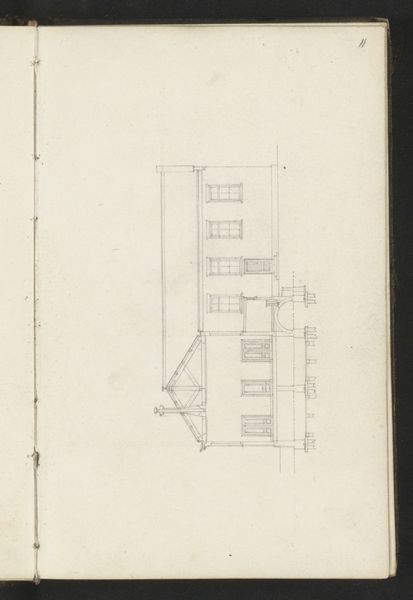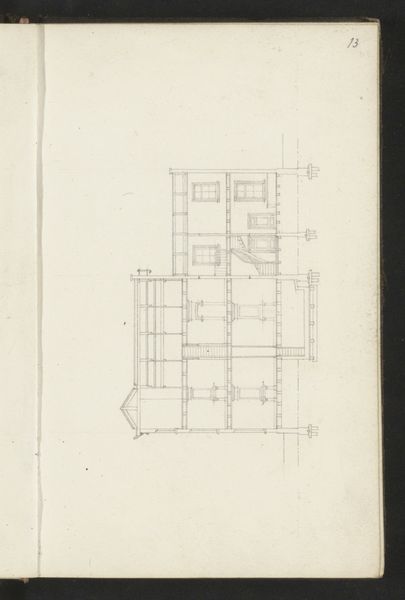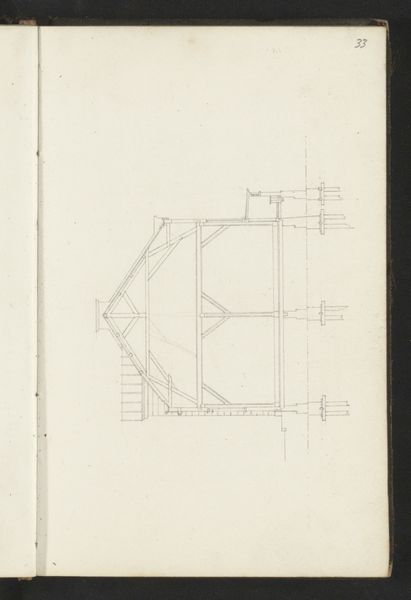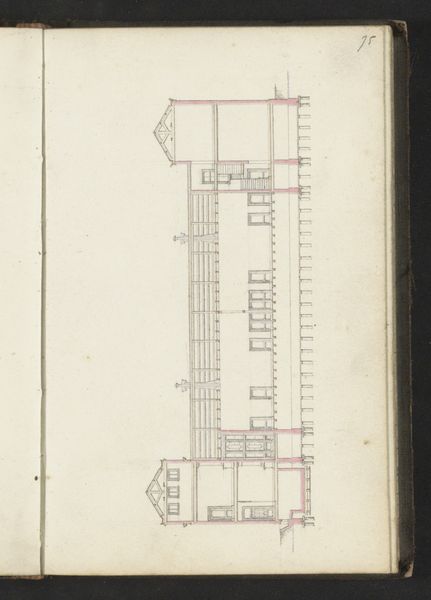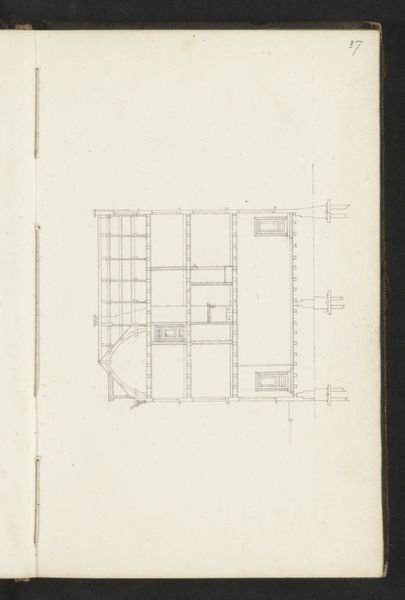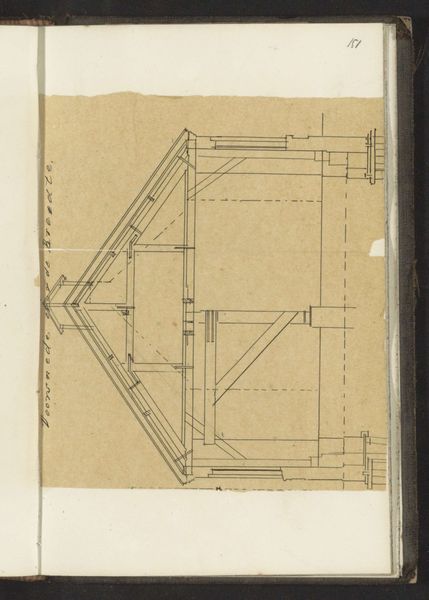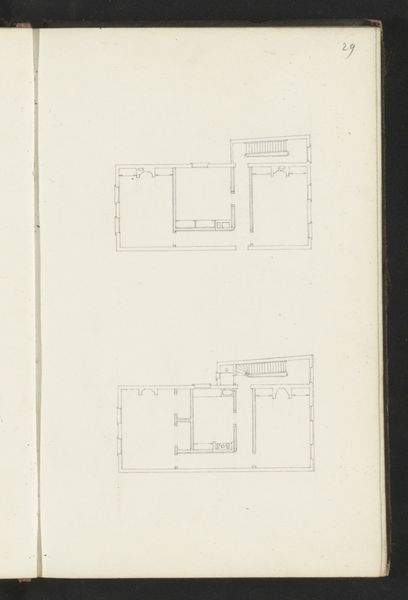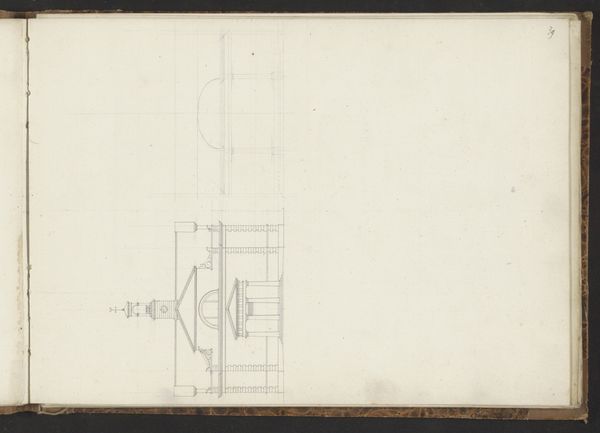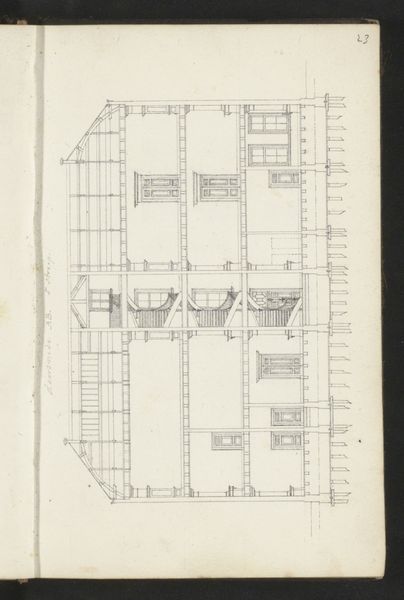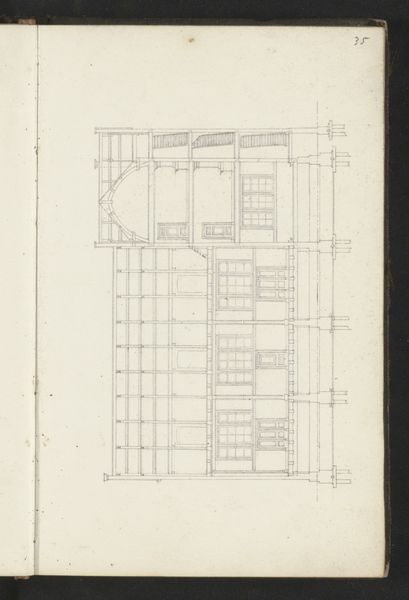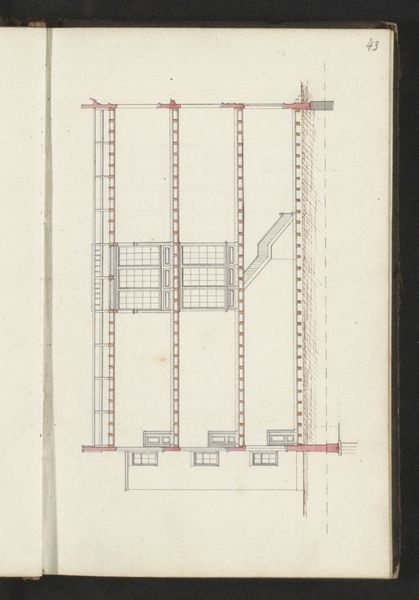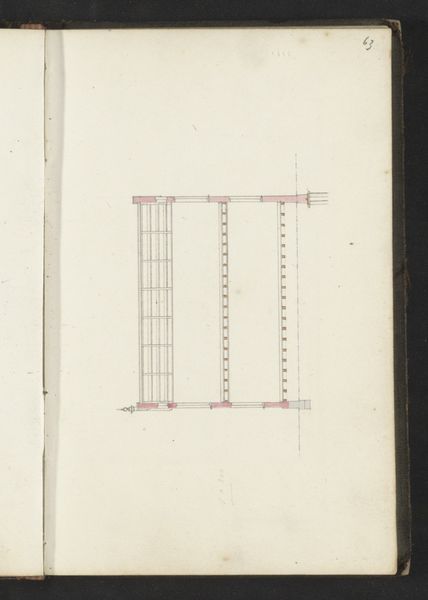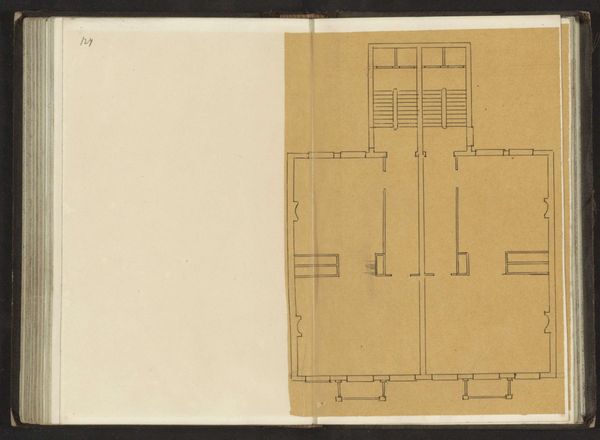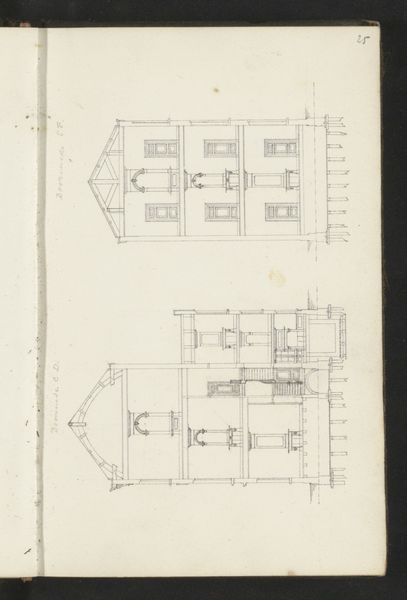
drawing, pencil, architecture
#
drawing
#
aged paper
#
hand written
#
homemade paper
#
script typography
#
sketch book
#
hand drawn type
#
form
#
personal sketchbook
#
hand-drawn typeface
#
pencil
#
stylized text
#
thick font
#
line
#
cityscape
#
academic-art
#
architecture
Copyright: Rijks Museum: Open Domain
Editor: So, this is "Doorsnede van een gebouw over de lengte" by Willem Springer Jr., circa 1864. It's a pencil drawing, a cross-section of a building. I’m struck by how technical and precise it is, almost like a blueprint. What's your take on it? Curator: The drawing certainly serves a functional purpose, but viewing it as an artwork allows us to consider its historical and social implications. Architectural drawings like this highlight the rapidly changing urban landscape of the mid-19th century. Cities were expanding, requiring detailed planning and construction. Did the development cater for all members of society or only the privileged classes? The drawing subtly underscores that relationship, and perhaps even a particular aesthetic ideal prevalent in institutional circles at the time. Editor: That’s a great point, about the social implications! It made me think about how architecture even in blueprints reveals underlying social structures. So, this precise rendering – was it a common style or method at the time, and who was it intended for? Curator: Precisely. Academic art training often included rigorous architectural drawing. This kind of technical skill was highly valued and served to communicate plans and ideas efficiently within established institutions and amongst elite groups who were the key players in urbanization and construction. This piece is especially intriguing because we can consider it against the backdrop of Springer's other works. How does this connect with other images of the city during the period? Editor: Hmm, I see your point. It isn't just about the building itself; it reflects the historical and social context in which it was conceived and who had a stake in its production. It shows how something functional can also reveal power dynamics. Curator: Absolutely, and reflecting on who consumes or controls images is important.
Comments
No comments
Be the first to comment and join the conversation on the ultimate creative platform.
